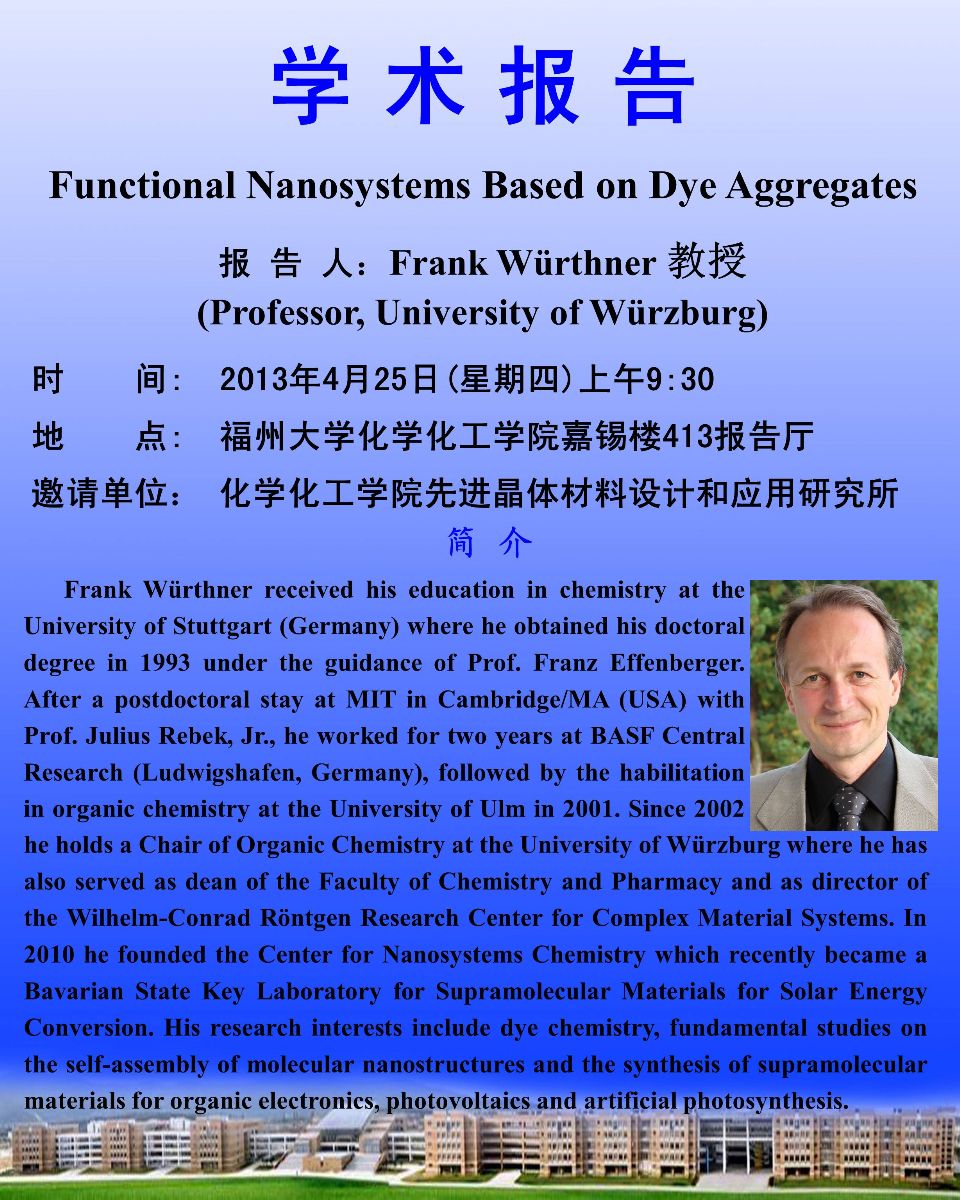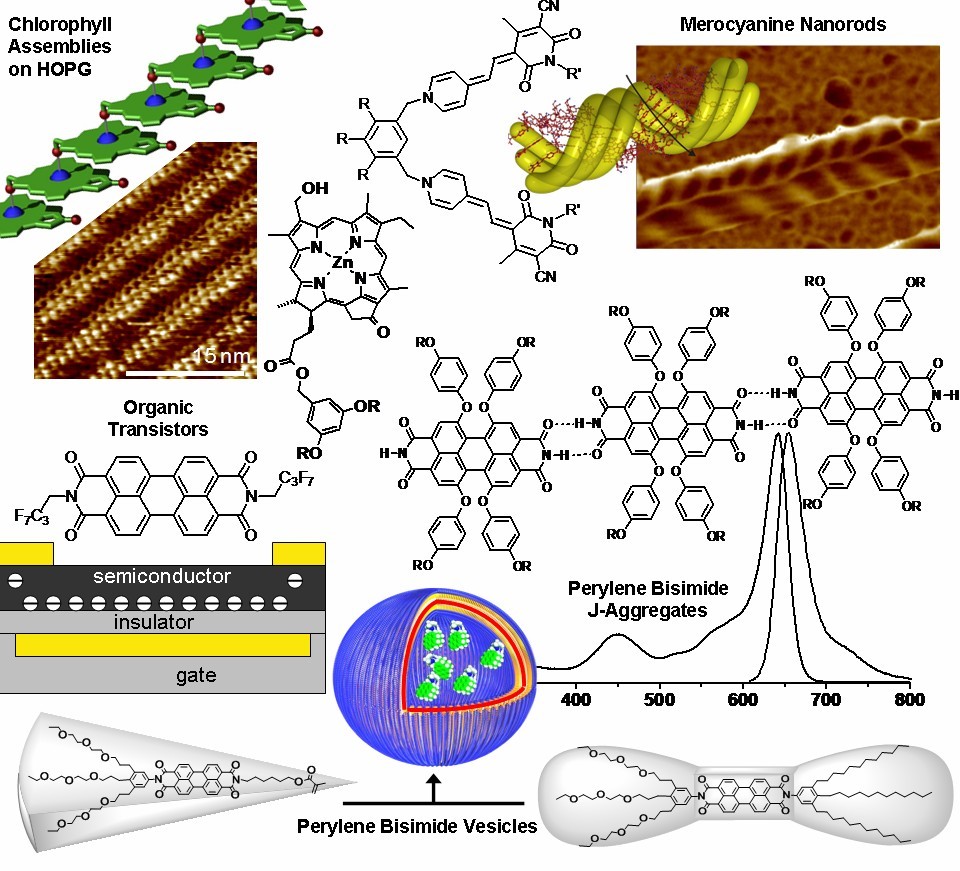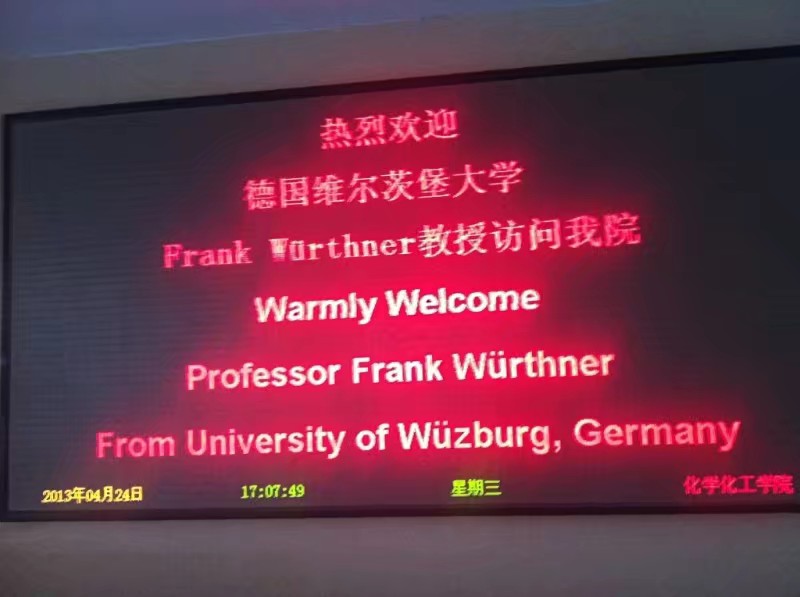题 目: Functional Nanosystems Based on Dye Aggregates
报告人: Frank Würthner 教授(Professor, Universität Würzburg)
时 间: 2013年4月25日(星期四)上午9:30
地 点: 福州大学化学学院嘉锡楼413

Research on dye molecules has been continuing to be at the forefront of new developments in chemistry owing to their versatile functional properties associated with p-conjugation. On a supramolecular level, appropriately controlled spatial arrangement of dyes enables pivotal functions in nature, the most intriguing examples being provided by the light-harvesting systems of purple and green bacteria which contain a large number of chlorophyll and carotene chromophores organized in cyclic arrays or tubular architectures by non-covalent interactions.
During the last few years, we have intensively investigated the organization of merocyanine, chlorin, squaraine, and perylene bisimide dyes by non-covalent forces into desirable nanoscale architectures as well as liquid-crystalline and crystalline solid state materials. In this lecture, I will provide an overview on our achievements in the preparation of defined dye assemblies and their functional properties that originate from proper p-p-stacking.1 In particular, charge and exciton transport in H- and J-aggregates,2 pH-sensitive energy transfer processes in dye vesicles,3 and photovoltaic performance of dye-based bulk heterojunction solar cells4 will be discussed.

详见:
1. Z. Chen, A. Lohr, C. R. Saha-Möller, F. Würthner, Chem. Soc. Rev. 2009, 38, 564–584.
2. F. Würthner, T. E. Kaiser, C. R. Saha-Möller, Angew. Chem. Int. Ed. 2011, 50, 3376–3410
3. X. Zhang, S. Rehm, M. M. Safont-Sempere, F. Würthner, Nature Chem. 2009, 1, 623–629.
4. H. Bürckstümmer, E. V. Tulyakova, M. Deppisch, M R. Lenze, et al, Angew. Chem. Int. Ed. 2011, 50, 11628–11632.
